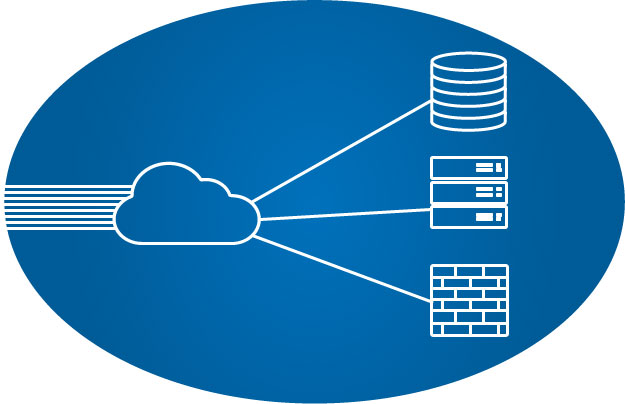
High availability is a must for organizations in an era when downtime can cost millions of dollars per minute. Many large businesses have invested in costly redundant systems, in which a backup system holds copies of servers, applications, and real-time data ready to assume the role of the production server if disaster strikes. However, out-of-band management (OOBM) offers businesses a more cost-effective and secure route to effective remote data center management that also minimizes downtime.
Maintaining Continuity for Complex Infrastructures
Large enterprises today often have several data centers, in addition to remote sites. They deploy redundant data centers to keep the business operational and maintain IT service availability if a disaster occurs.
Most data centers incorporate servers, storage and applications, and a network infrastructure of hubs, routers, firewalls and switches. Bigger organizations may also run remote or branch office infrastructures connected to the corporate production network via a virtual private network (VPN) or through a wide area network (WAN) connection.
Within larger remote installations (e.g., a big department store), companies may operate a scaled-down version of the data center featuring racks of servers, storage, and network infrastructure. Smaller remote offices operate using more limited infrastructure, based on a router, firewall, and hub with network connections for desktop PCs.
However, it doesn’t matter whether an organization is large and spread across a number of sites or restricted to a single data center, all IT managers face the same challenge: how to optimize performance and availability at the lowest possible cost.
How OOBM works
OOBM gives you an alternate path for accessing and controlling infrastructure assets on your production network. Instead of the Ethernet connection most production networks use, OOBM relies on console servers, cellular, plain old telephone service (POTS), multi-protocol label switching (MPLS), or broadband.
OOBM functions on a “management plane” that operates independently from the “data plane” used by data traffic on the switch and by in-band management traffic. This independence means that OOBM can keep operating even when the operation network is congested with traffic, an asset fails, or your network is attacked.
Furthermore, it can enhance switch security because a switch that is configured in the right way can restrict management access to the management port only, and this stops hackers from getting access through the data ports.
Network OOBM usually takes place on a management network that links multiple switches. Another benefit of OOBM is that it can be deployed centrally and does not need an individual physical cable to connect the management station to each switch’s console port.
Given that OOBM gives you access to your servers from anywhere and at any time, its main use case is access and control of the network infrastructure when incidents occur that cause unplanned downtime. OOBM channels are fully dedicated to maintaining the uptime of your network 24/7, making them ideal for managing your data center.
With OOBM tools, you can minimize human and operational/environmental errors by streamlining failure detection and recovery procedures. This gives you greater control, enabling you to do more with less, and delivering remote access to your data center from any location.
Minimal Site Visits
If an IT asset fails, you can use OOBM tools to remotely restore it to the network infrastructure. It can then be restored to productivity within a very short time frame. This means that local site visits are virtually unnecessary, so you minimize the time and resources required to get your IT assets back online when they fail, boosting productivity and reducing the risks associated with downtime.
OOBM is a key capability that will enhance overall uptime and remote access for every data center and remote site, allowing for fast response times for remediation and repairs and reducing outages.
OOBM in Practice: The Optimal Solution
If you have OOBM tools in place, your network infrastructure will stay operational even when a device or server in the data center fails. The administrator simply uses the OOBM tools and the network infrastructure to access the asset in question, determine what has gone wrong, and switch the device off and on (power cycle) if necessary. The asset is quickly restored to the network, where it can be restored to productivity using a systems management application.
Optimal OOBM depends on having every element working in an integrated system that IT personnel can access via a single, consolidated view, such as that provided by Device42. With Device42, you can ensure that the tools of your system of choice provide consolidated access, change management, and configuration management and the capacity to manage diverse IT assets connected to these out-of-band tools from a single consolidated view. The management software is also flexible enough that it can be scaled up as your demands grow.
Need to plan your OOBM requirements? Contact Device42 for guidance on the best approach to planning OOBM for your organization.


